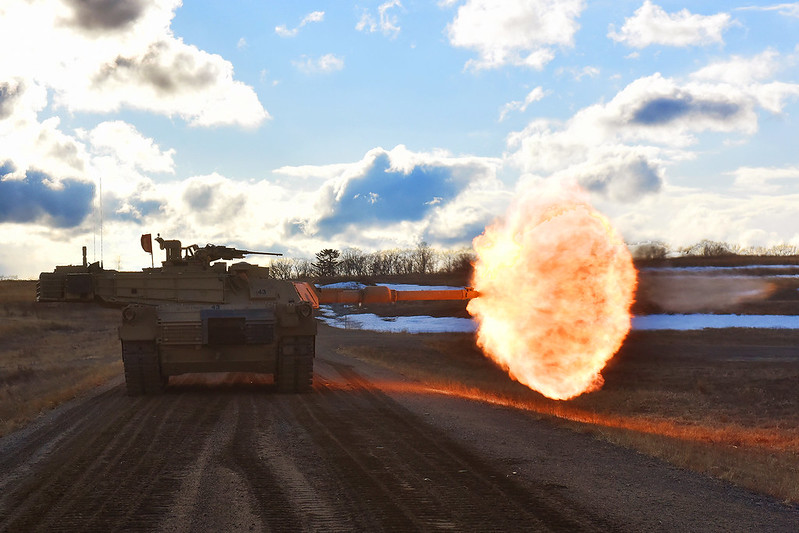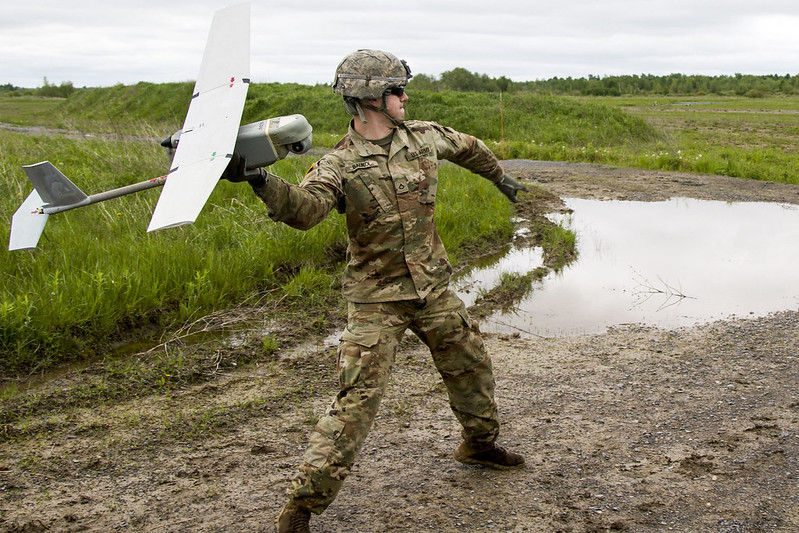Yes, yes, yes: the laser wars are here! For years everyone had single-laser powder bed fusion (PBF) systems. Then, there was double and, for a few years, quad-laser systems were all the rage. Now, we’ve jumped into a new multi-laser era, however. Velo3D announced its eight laser Sapphire system a few weeks ago. Yesterday, SLM Solutions told us about a 12 laser system. Now, 3D Systems has disclosed that it is working on a nine-laser system of its own, with a build volume of 1m x 1m x 600mm.
3D Systems is working with the Combat Capabilities Development Command (DEVCOM) of the Army Research Laboratory (ARL) to make the system and received a $15 million contract award for the project. Stephanie Koch, Program Manager of Advanced Manufacturing, Materials, and Processes for ARL, said of the development:
“When we embarked on this project, we needed a faster way to produce critical components for major ground combat subsystems. The progress that has been made on this project to date is monumental. We look forward to the coming months as we progress to a full-scale production solution that will enable innovative new capabilities for transformational overmatch.”
Lisa Strama, President and CEO of the National Center for Manufacturing Sciences, added:
“This project has also provided the unique ability to concurrently plan for and address a complex ecosystem for maximizing the benefit to US manufacturers’ competitiveness from the outset.”

In addressing the laser wars, we have discuss a little bit of a caveat: Whereas, in a year or two, we would all love to be at the 30-laser EOS party or look forward to diode laser systems instantly heating one voxel, metal printing is rarely that easy. Actually, it’s frighteningly complex and much of what goes on inside a build is not yet completely understood. So, with regards to our laser arms race, there may be some issues, as well.
First off, if I mowed the lawn and took one hour alone, I could ask a friend and perhaps we could do it in half an hour with two lawnmowers. We can’t, however, infinitely add lawn mowers though and we won’t be getting a linear set of performance improvements over time. At the same time, if we tried to mow our lawn with 20 people with 20 lawnmowers we would also spend a lot of time a.) going over already mowed parts, b.) waiting for other lawnmowers to pass us by, and c.) colliding with other lawnmowers. We’d also end up with a lot of costs that may not in fact pay off.
It’s not just lasers in this case, but control and movement for the optics, as well as computing power, that we’re looking at. For PBF, it’s worse still, since, if I pass a certain shape by with a certain laser at a certain distance at a certain moment with a certain spot size and power, I’ll leave residual heat behind in that part and in the adjacent area. If, at a certain time, another laser then builds the next layer, the heat in that area may be very different from the rest of the build. The heat there would also influence the temperature in the chamber and the heat in the adjacent areas. So, one could adjust power or spot size as Velo3D and SLM do, but in adding more lasers, you’ve got to, in effect, completely recalculate the build, as well as monitor or simulate it to such a degree per second—this, in turn, would require a lot of computing power.

Having said this, the laser wars are excellent news in adding a generation of PBF systems to our arsenal that are not the lab boxes of old or the “production in the press release alone” systems of last year. Instead, these are highly productive systems that will significantly reduce the cost and throughput of powder bed fusion.
The 3D Systems machine works according to selective powder deposition, only depositing powder where it is needed, which they hope will speed up prints while reducing wasted material. The press release noted: “The build chamber also includes a heated build plate to reduce thermal stress and also improve deposition quality during the build,” which seems very sensible.
The problem of having to calculate all of the necessary information is being solved through the use of the 3D Systems DMP optical system, as well as vacuum chamber, and through an “optical train that enables each of the next-generation printer’s nine lasers with its own melt pool monitoring system for enhanced quality control.” The company also says that their inert gas process produces ten times less argon than other systems and reduces oxygen levels to below 25ppm.

“This results in exceptionally strong parts of high chemical purity while powder quality remains high through the lifetime of the material’s usage. This results in a significantly reduced total purchase cost of compressed argon over machine lifetime as well as savings enabled by powder reusability for lower Total Cost of Operation,” the press release explains.
The printer will also include six SLR cameras that can monitor the build as it occurs. The system captures “all digital input including sensor data, positional information, melt pool data and powder bed pictures into an SQL database.” It is early days yet for the 3D Systems machine and it’s difficult to judge a development from intent and ideas alone, but it’s nice to see the level of ambition ratchet upward across the industry and we can’t wait to see what GE and EOS are working on, as well.
Images courtesy of the U.S. Army on Flickr.
Subscribe to Our Email Newsletter
Stay up-to-date on all the latest news from the 3D printing industry and receive information and offers from third party vendors.
You May Also Like
3D Printing Unpeeled: New Arkema Material for HP, Saddle and Macro MEMS
A new Arkema material for MJF is said to reduce costs per part by up to 25% and have an 85% reusability ratio. HP 3D HR PA 12 S has been...
3D Printing News Briefs, January 20, 2024: FDM, LPBF, Underwater 3D Printer, Racing, & More
We’re starting off with a process certification in today’s 3D Printing News Briefs, and then moving on to research about solute trapping, laser powder bed fusion, and then moving on...
3D Printing Webinar and Event Roundup: December 3, 2023
We’ve got plenty of events and webinars coming up for you this week! Quickparts is having a Manufacturing Roadshow, America Makes is holding a Member Town Hall, Stratafest makes two...
Intuitive Machines Debuts $40M Hub for Lunar Ambitions and 3D Printing Tech
Best known for its pioneering work in lunar exploration and its development of the Nova-C lunar lander, Intuitive Machines (Nasdaq: LUNR) has marked yet another significant milestone. The leading space...































